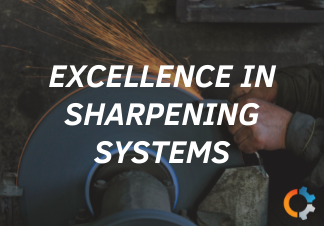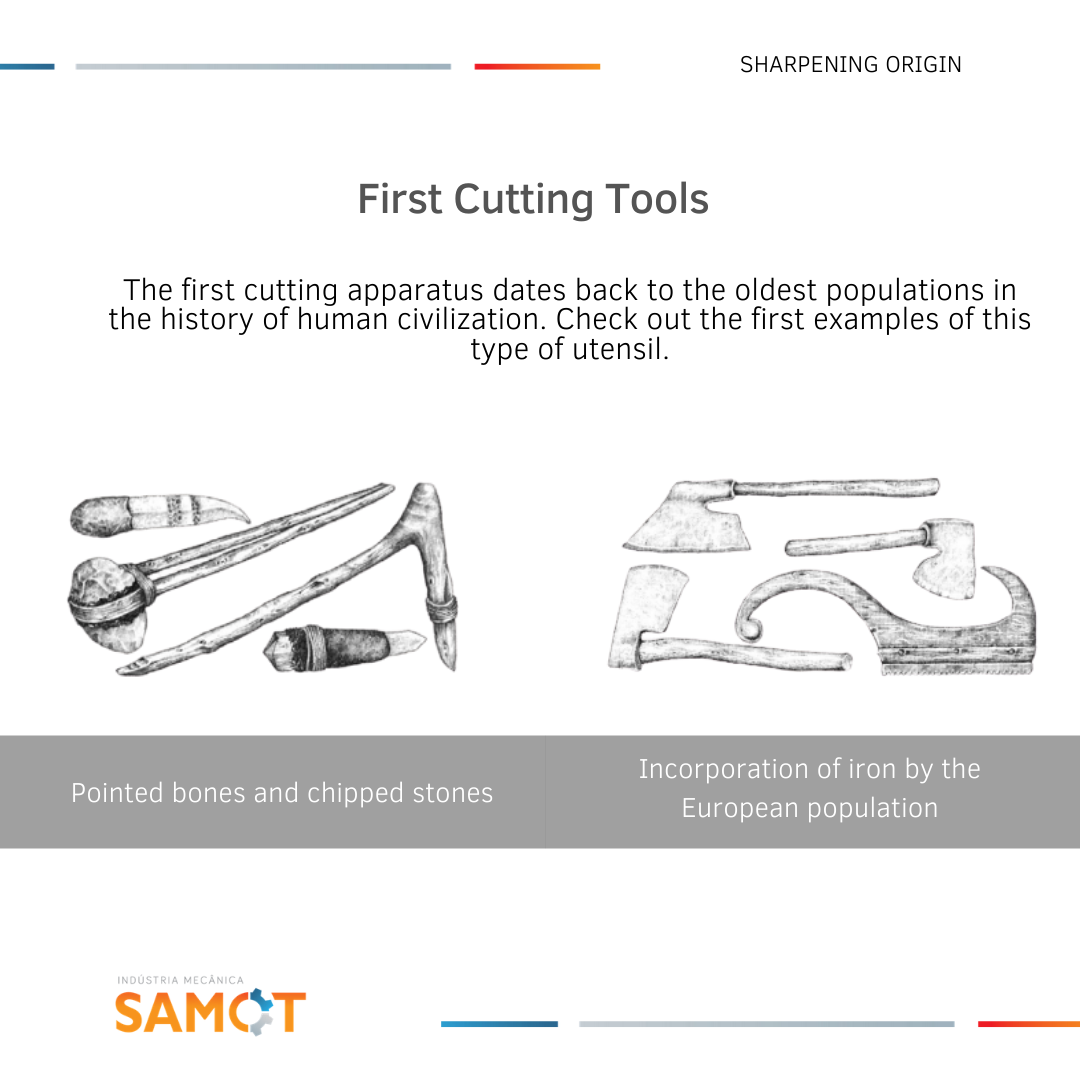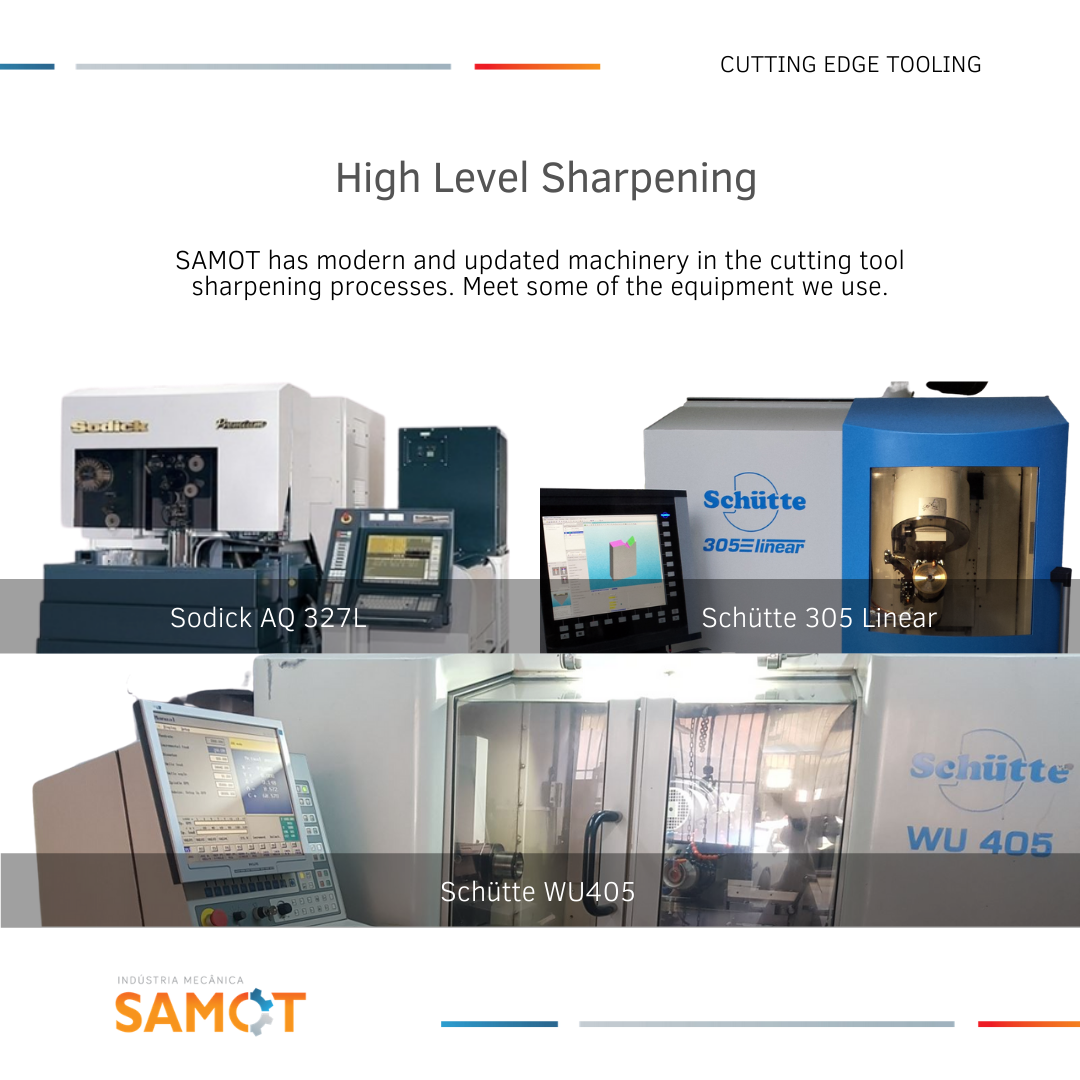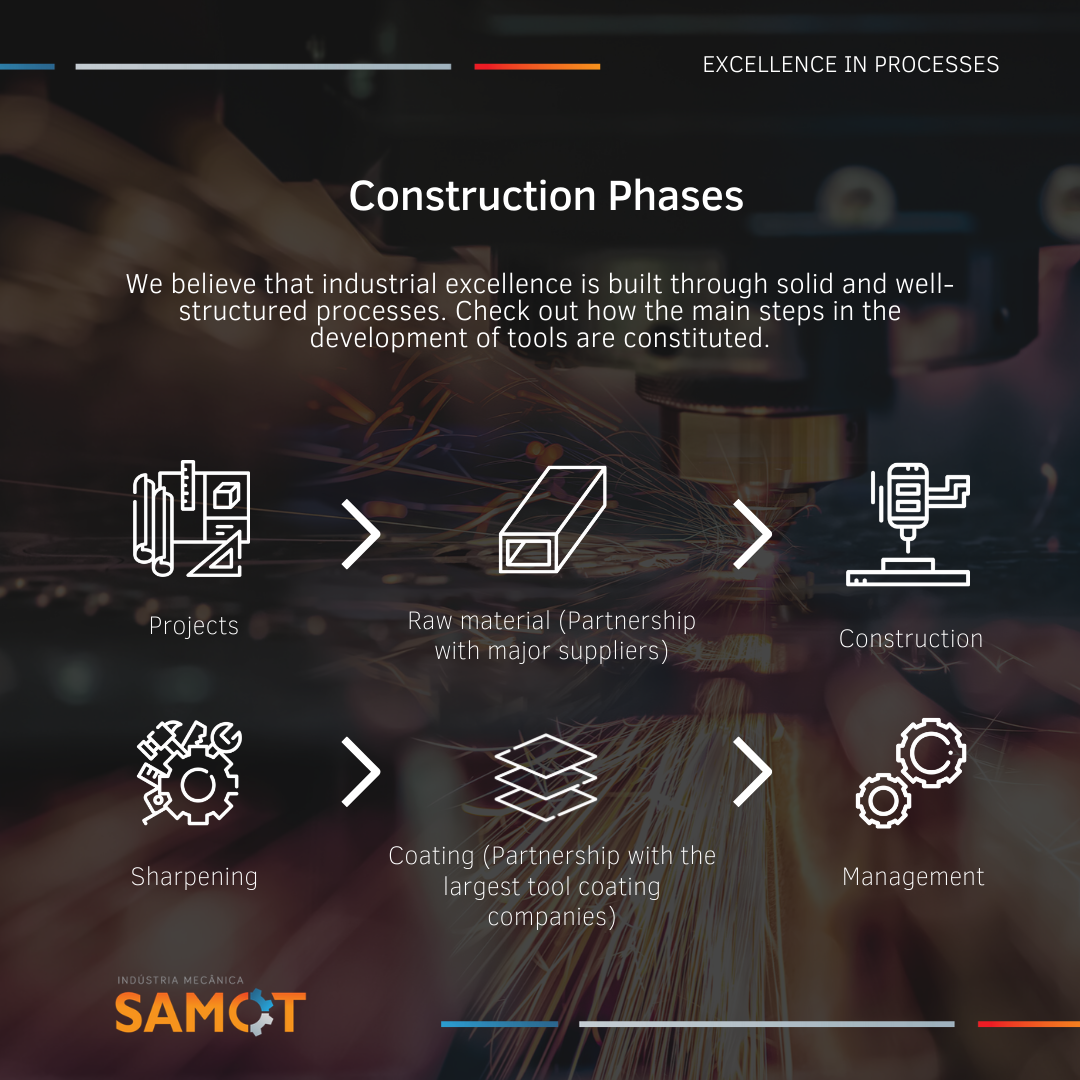
Learn how the use of cutting tools started and its evolution.
It all started 10,000 B.C., in the Paleolithic Period, when the first cutting tools were developed by using sharp bones and broken pieces of stone. In the Neolithic Period (from 8000 B.C to 5000 B.C.), also known as the New Stone Age, is the second period of pre-history, and is marked by the development of farming societies. This period is referred to as New Stone Age since the tools started being produced through the polishing of stones and working on the cutting line.
In this sense, it is important to emphasize that the previous period, the Paleolithic, is referred to as the Old Stone Age, since stones were not submitted to this treatment.

In the Neolithic period, one of the greatest technological advances in tool manufacturing took shape, and the iron melting and treatment technique was greatly improved. Now, this ore is no longer treated through percussion and polishing as the Stone, but through several new features (such as the oven, anvil, bellows and hammer) that have enabled man to produce the very matter from which the tool will be made. It was the embryo of the metallurgical industry we know today.
In 3000 B.C., the Egyptians started using tools such as saws, bow drills and chisels made of bronze. Iron started being used by the Greeks, the Romans and the Nordic peoples of Europe to produce household tools, houses and ships.
Despite the great progress regarding the construction of those tools, the work, developed by the important figure of the blacksmith, was still extremely manual and used both human force and animal motor. It was only in 1769, when brilliant British engineer James Watt revolutionized the general industry by improving the existing steam engines of the time. From Watt’s modifications, steam engines started to move the first trains, boats, factories, as well as forgeries and coal mines, and in that way, set the base for the Industrial Revolution. That great invention would forever transform the way the factories produced and sharpened their cutting tools.
The tools started to be powered by engines, whether steam, liquid fuel, or electricity. That made it possible to have simultaneous operation of several hammers, drills and scrapers, a level of automation that was previously impossible. In addition, there was an immeasurable increase of speed, precision of movements, and operating time of machines, essential factors for the evolution of the metallurgy industry.
Tool Manufacturing Structure at Samot: application of technologies for our clients’ projects.
Samot stands out for having high technology and different types of machines in its manufacturing center for building and sharpening its own tools. These tools contribute to optimize your machining processes, from a technical team dedicated to the project, manufacturing and sharpening of tools as necessary.
Furthermore, we offer a full structure for the manufacturing of tools, delivering greater agility for the development of new projects and greater competitiveness through the reduction of costs in our manufacturing processes.

The process of Re-sharpening can be repeated several times, allowing a single tool to be used for a long time with the same precision of a new device. In this process, coating can be also applied, if necessary. Coating improves the performance of the tool, providing productivity gains and extending its useful life. Advantages of the sharpening department in Samot corporation:
Vantagens do setor afiação na corporação Samot:
Fabrication with own know-how.
Agility in delivering on time.
Versatility in adapting tools.
Technical team duly trained for innovations.
Fabrication and re-sharpening of tools in production.
Special tools with lower costs.
Reuse of obsolete tools for new products.
Check below all the stages of this development.

For these and other reasons, Samot is considered by many manufacturers a benchmark in this market. Always pursuing new and best practices, we have quality, agility and efficiency as requirements in all our deliveries, and these characteristics are also featured in all our internal processes.

